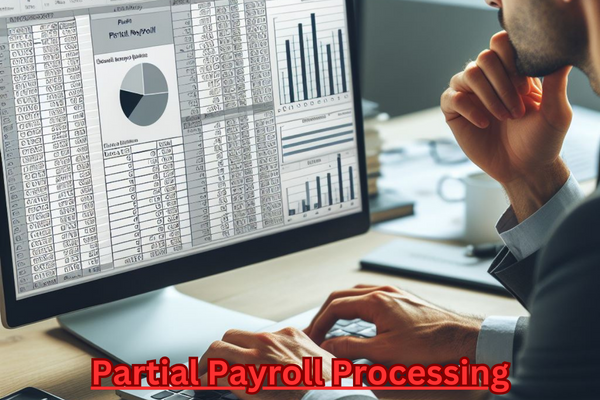Contents
Introduction of Partial Payroll Processing
Payroll processing stands at the coronary heart of each organization’s monetary operations. However, the panorama isn’t always constantly smooth, specifically when dealing with partial payroll processing. In this complete guide, we are going to delve into the challenges confronted and discover modern options to make certain that your payroll machine runs seamlessly.
Understanding Partial Payroll Processing
Partial payroll processing entails the disbursement of pay for solely a subset of personnel at some point in a unique payroll cycle. This can be due to several motives such as transient workers, contract employees, or folks becoming a member of or leaving the employer mid-pay cycle. While this method affords flexibility, it brings alongside its set of challenges.
Challenges of Partial Payroll Processing
1. Data Accuracy and Integration Issues:
Processing payroll for a subset of personnel can lead to record accuracy challenges. Integrating this partial information with the broader worker database whilst keeping accuracy turns into crucial.
2. Compliance Concerns:
Adhering to labor legal guidelines and tax policies is paramount. Partial payroll processing can complicate compliance efforts, main to viable prison problems if now not managed meticulously.
3. Communication Gaps:
Employees anticipate clear verbal exchanges about their compensation. Partial payroll cycles can lead to confusion if verbal exchange channels are now not robust, impacting worker morale.
4. Time-Consuming Manual Processes:
Managing partial payrolls manually can be time-consuming. It will increase the probability of errors, consume precious resources, and hamper average efficiency.
5. Integration with HR Systems:
Partial payroll processing necessitates seamless integration with HR systems. Any discrepancies in this integration can result in blunders in worker data, affecting each payroll and HR function.
Solutions for Effective Partial Payroll Processing
1. Integrated Payroll Systems:
Investing in built-in payroll structures that seamlessly sync with HR databases can streamline partial payroll processing. This ensures that information is accurate and up-to-date, and minimizes the possibility of errors.
2. Automated Workflows:
Embrace automation to minimize the guide workload. Automated workflows can cope with movement tasks, such as information entry and calculations, minimizing the threat of blunders and saving precious time.
3. Comprehensive Employee Communication:
Establish a sturdy conversation strategy. Keep personnel knowledgeable about partial payrolls, explain the process, and address any worries promptly. An obvious strategy fosters faith and reduces anxiety.
4. Regular Compliance Audits:
Conduct everyday audits to make certain that partial payroll techniques comply with nearby labor legal guidelines and tax regulations. Staying proactive in compliance reduces the chance of felony repercussions.
5. Training and Skill Development:
Equip your payroll crew with the crucial competencies and coaching to cope with partial payrolls effectively. This ensures that the crew is well-prepared to tackle challenges and put into effect fantastic practices.
6. Cloud-Based Solutions:
Consider migrating to cloud-based payroll solutions. These structures provide scalability, accessibility, and information security. Cloud-based structures are frequently designed to cope with dynamic payroll scenarios, making them best for partial payroll processing.
7. Employee Self-Service Portals:
Implement self-service portals the place personnel can get the right of entry to their payroll information. This now not solely empowers personnel but additionally reduces the workload on HR and payroll teams.
8. Scalable Payroll Platforms:
opt for payroll structures that can scale with your organization’s growth. A scalable platform adapts to modifications in the team of workers’ measurement and structure, accommodating partial payrolls effortlessly.
Conclusion
In conclusion, whilst partial payroll processing poses its share of challenges, strategic planning and the adoption of cutting-edge applied sciences can seriously change these challenges into possibilities for increase and efficiency. By investing in integrated, computerized solutions, fostering clear communication, and staying vigilant on compliance fronts, companies can navigate the complexities of partial payroll processing with confidence. Embrace the evolving panorama of payroll management and make certain that your organization’s monetary heartbeat stays robust and resilient in the face of a dynamic group of workers scenarios.

Leave a Reply